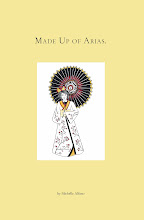 Becoming Jane Austen by Jon Spence (Hambledon & London, 2003) 294 pages
Becoming Jane Austen by Jon Spence (Hambledon & London, 2003) 294 pagesOf course I was eager to know which, if any, part of the film Becoming Jane which was released this spring, had any basis in reality. Not a great deal apparently ... although I loved both the film and this book which inspired it.
Initially in the book, there is a bit of a tedious recounting of Jane's ancestors, not particularly interesting or notorious, but of assistance when deciphering the various Austen relatives during Jane's lifetime.
Yes, we find, Jane's love interest in the film, Tom Lefroy, was a real person, the illustrious Thomas Langlois Lefroy (1776 - 1869), an Irish politician and judge, who eventually assumed the position of Chief Justice of Ireland. As an aspiring lawyer he initially moved in the same circles as Jane's extensive family. They met, there was an attraction, a flirtation, some suggestion that he might be more serious towards Jane.
There is also a lovely subplot in the film regarding the romance between Jane's brother Henry Austen and their first cousin, the beautiful, sophisticated Eliza de Feuillide. In the film, Jane seems mildly perturbed at this flirtation and eventual consummation between the cousins. In the historical account of the book, she is more aggressively opposed to the match as are all of the Austen family. But, subtly I feel, the passion between the two beautiful cousins serves as a catalyst for the romance for Tom and Jane in the film. The real Jane Austen wrote a great deal of juvenilia about Henry and Eliza such as this vignette here. And it didn't always end well (in Jane's fiction). This link gives a genealogy of the Austen family.
Tom Lefroy had a large dependent family for whom he was responsible and a great uncle, Benjamin Lefroy, who wanted grand things for Tom. Jane, was a particular favorite of Tom’s Aunt Anne Lefroy, who, though quite a bit older, forged a very close relationship with the twenty year old Jane.
The couple met during the Christmas season of 1796 and often attended balls together. He lent her his copy of Tom Jones, a book considered to be very provocative at the time (later Jane would use the surnames of many of the characters in Tom Jones in her own books according to Jon Spence).
Visits were exchanged at each other’s homes and this "whirlwind relationship" ended after a month with Jane expecting to receive an offer of marriage. He then disappeared from Jane's social circle without making an offer. It was said that he lacked the independent means to marry someone that the family might not have approved of. Jane has no means of her own and as she grew older became wholly dependent upon the largess of her wealthier brothers and the small but growing revenue from the publication of her books.
By the spring of 1797, Tom was engaged to Mary Paul, the sister of a college friend. He married in 1799 and had seven children. In the movie much is made of that fact that he had a daughter named Jane Christmas Lefroy but it is more likely the girl was named for his mother-in-law Jane Paul. When pressed in his old age, Lefroy only admitted to a "boyish love" for Jane Austen. So lovely as the daydream is, there was no scheme to elope to Scotland, no decision on the part of Jane to end their relationship for his sake. Aah but a girl can dream can't she?
With historical notes from janeausten.co.uk/magazine.









2 comments:
Loved the film - thought Anne Hathaway did a great job as Jane (much better than her acting in the new Alice film, where she just seems bizarre, and not in the good way in which Helena Bonham Carter is bizarre).
I think what I liked best about the film was the idea that Jane Austen was as noble, principled, high-minded and realistic as her heroines. So now I'll have to read the book as well.
Yes, I am totally infatuated with Jane and all her offspring!
Post a Comment